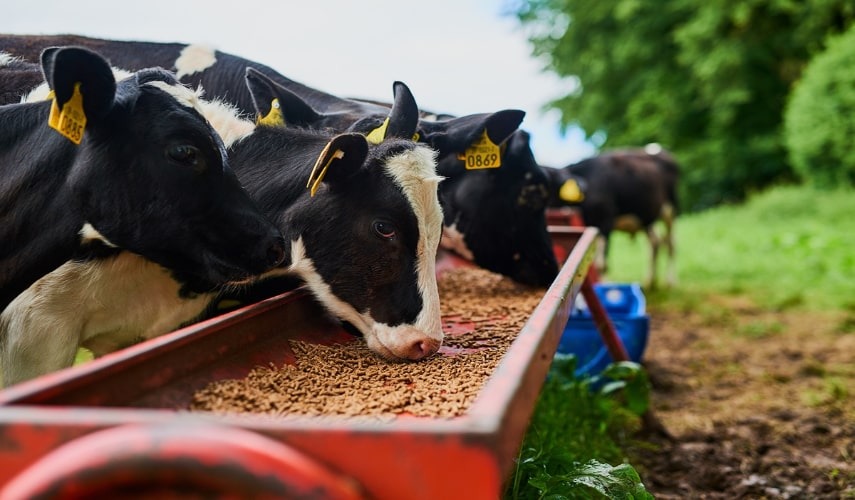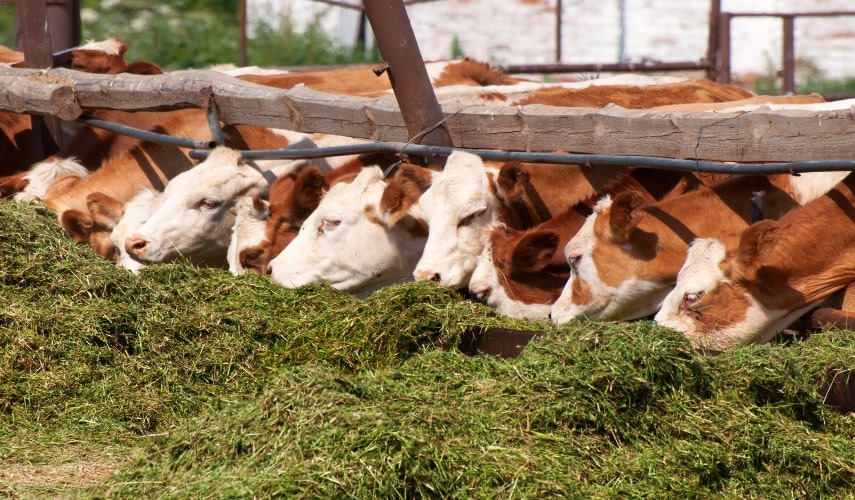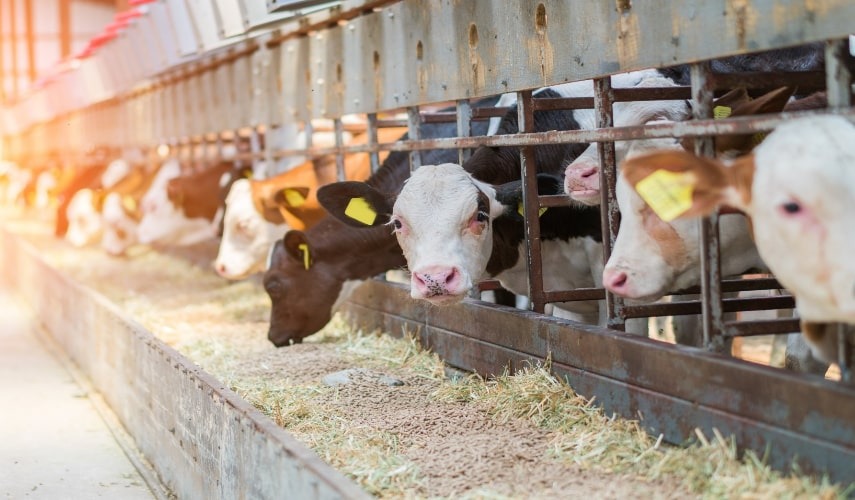In today’s dynamic global economy, the agriculture sector plays a crucial role in providing sustenance and resources to nations. One of the key components of this sector is the animal feed industry, which serves as the backbone for livestock production. In this article by SUDCCO, we delve into the Iran animal feed market, uncovering its trends, challenges, and opportunities for growth.

1. Introduction to the Iran Animal Feed Market
The Iran animal feed market is a dynamic and evolving sector that plays a crucial role in supporting the country’s livestock industry. As the demand for high-quality animal products continues to rise, the significance of a robust and efficient animal feed market cannot be overstated. In this article, we will delve into the various aspects of the Iran animal feed market, including its historical evolution, current landscape, key trends, challenges, and opportunities.
1.1 Evolution of the Animal Feed Industry in Iran
The history of the animal feed industry in Iran dates back several decades, and it has undergone significant transformations over time. Traditionally, animal feed was composed of locally available ingredients, often resulting in generic feed formulations. However, with the advancement of scientific knowledge and the introduction of modern technologies, the industry has shifted towards more specialized and tailored feed options.
1.2 Importance of Animal Nutrition
In recent years, there has been a growing recognition of the vital role that proper animal nutrition plays in ensuring the health, growth, and productivity of livestock. This understanding has led to increased investments in research and development, resulting in the formulation of feeds that are tailored to meet the specific nutritional needs of different types of animals.
1.3 Technological Advancements
Technological integration has been a driving force behind the modernization of the animal feed industry in Iran. Automation, data analytics, and quality control measures have not only improved the efficiency of feed production but have also contributed to the formulation of feeds that are optimized for animal health and growth.
1.4 Changing Consumer Preferences
As consumer awareness regarding the source and quality of animal products grows, there is a heightened demand for products derived from animals that have been raised on high-quality and nutritionally balanced diets. This shift in consumer preferences has influenced feed manufacturers to develop innovative and nutrient-rich feed formulations.
1.5 Scope of the Article
In the subsequent sections, we will explore the intricate details of the Iran animal feed market, encompassing its current landscape, key trends, challenges faced by the industry, and the promising opportunities that lie ahead. By delving into these facets, we aim to provide a comprehensive understanding of the role that the animal feed market plays in shaping Iran’s livestock sector and its broader agricultural landscape.
Stay tuned as we embark on a journey to uncover the nuances of the Iran animal feed market, shedding light on the forces that drive its growth, the obstacles it encounters, and the strategies that can be employed to harness its full potential.

2. Factors Driving the Demand for Animal Feed in Iran
The demand for animal feed in Iran is underpinned by a multitude of factors that collectively contribute to the growth and development of the country’s livestock industry. As the population continues to increase and consumer preferences evolve, the role of high-quality animal nutrition becomes increasingly significant. In this section, we will delve into the key factors that drive the demand for animal feed in Iran.
2.1 Rising Population and Urbanization
Iran’s growing population, combined with the ongoing trend of urbanization, has a direct impact on the demand for animal products. As more people move to urban areas, there is an increased need for meat, dairy, and other animal-derived products, driving up the demand for livestock production.
2.2 Increased Consumption of Animal Products
Changing dietary habits and an increasing disposable income have led to higher consumption of animal products, such as meat, eggs, and dairy. This surge in demand places pressure on the livestock industry to produce more, which, in turn, drives the need for efficient and nutritious animal feed.
2.3 Focus on Quality and Safety
Consumers are becoming more conscious of the quality and safety of the food they consume. They are seeking products that are not only tasty but also safe and nutritious. Livestock raised on balanced and nutritious diets produce higher-quality products, which emphasizes the need for well-formulated animal feeds.
2.4 Specialized Feeding Requirements
Different categories of animals, such as poultry, cattle, and aquaculture species, have distinct nutritional requirements. Providing them with specialized feeds tailored to their needs ensures optimal growth, health, and product quality. This demand for specialized feeds further contributes to the overall demand for animal feed in Iran.
2.5 Export Opportunities
Iran’s strategic geographical location presents opportunities for exporting animal products to neighboring countries. To meet the export standards and tap into these markets, Iranian producers need to adhere to international quality and safety regulations, which can be achieved through proper animal nutrition and feed management.
2.6 Government Initiatives
The Iranian government recognizes the importance of a thriving livestock industry for economic growth and food security. Various policy initiatives and incentives are aimed at promoting animal husbandry, which, in turn, stimulates the demand for high-quality animal feed.
2.7 Environmental Concerns
Environmental consciousness is on the rise, leading to a preference for sustainable and eco-friendly animal production practices. Properly formulated feeds can help reduce the environmental footprint of the livestock industry by improving feed efficiency and minimizing waste.
2.8 Technological Advancements
Advancements in feed science and technology have resulted in innovative feed formulations that improve animal health and performance. The integration of probiotics, prebiotics, and other additives in animal feed has become a norm, driving demand for such specialized feed products.
2.9 Emerging Livestock Sectors
While poultry and cattle are well-established sectors, other livestock categories like aquaculture are gaining traction. These emerging sectors demand tailored feed solutions to ensure optimal growth and product quality, further boosting the demand for animal feed.
As we move forward in this exploration of the Iran animal feed market, these factors will continue to shape the industry’s trajectory. Understanding these drivers is crucial for both feed manufacturers and consumers, as they navigate the challenges and opportunities within the evolving landscape of animal nutrition in Iran.

3. Key Challenges Faced by the Animal Feed Industry in Iran
While the Iran animal feed market holds immense potential for growth and development, it is not without its share of challenges that stakeholders must navigate to ensure sustainability and success. In this section, we will delve into the key challenges faced by the animal feed industry in Iran.
3.1 Raw Material Sourcing and Supply Chain
One of the primary challenges encountered by the animal feed industry is the reliance on imported raw materials. Fluctuations in global markets, supply chain disruptions, and currency exchange rate fluctuations can impact the availability and cost of essential feed ingredients. Developing robust local sourcing strategies and exploring alternative feed ingredients can mitigate this challenge.
3.2 Regulatory Framework and Compliance
Navigating the complex regulatory landscape related to feed ingredients, additives, and labeling can be a daunting task for feed manufacturers. Ensuring compliance with evolving regulations while simultaneously innovating and producing high-quality feed products requires significant resources and expertise.
3.3 Quality Control and Standardization
Maintaining consistent quality across batches of animal feed is crucial for ensuring animal health and product quality. However, challenges related to quality control and standardization can arise due to variations in raw materials, manufacturing processes, and storage conditions.
3.4 Knowledge and Training
A skilled workforce is essential for the formulation, production, and management of animal feed. Ensuring that professionals within the industry have access to up-to-date knowledge, training, and expertise is imperative for maintaining high-quality feed production practices.
3.5 Market Fragmentation
The animal feed market in Iran consists of numerous small and medium-sized enterprises, leading to fragmentation. This fragmentation can hinder economies of scale, research and development investments, and the adoption of advanced technologies.
3.6 Price Volatility
Price volatility in global commodity markets affects the cost of raw materials, which, in turn, impacts the overall cost of animal feed production. Fluctuating feed prices can pose challenges for both feed manufacturers and livestock producers in managing their budgets.
3.7 Consumer Awareness and Education
Educating consumers about the importance of quality animal nutrition and the role of feed in ensuring animal health and product quality can be a challenge. Misconceptions and lack of awareness can affect consumer perceptions and preferences.
3.8 Environmental Concerns
Balancing the demand for increased livestock production with environmental sustainability is a complex challenge. Managing waste, minimizing environmental impact, and promoting sustainable production practices require innovative solutions and investments.
3.9 Infrastructure and Distribution
Efficient distribution networks are essential for ensuring timely and cost-effective delivery of animal feed to different regions. Inadequate infrastructure and logistical challenges can lead to delays and increased costs.
As the animal feed industry in Iran continues to evolve, addressing these challenges requires collaboration, innovation, and strategic planning. By overcoming these obstacles, stakeholders can foster a resilient and thriving animal feed market that contributes to the growth of the livestock sector and the broader agricultural economy.

4. Opportunities for Growth in the Iran Animal Feed Market
While the animal feed industry in Iran faces its fair share of challenges, it is also brimming with opportunities that can drive innovation, sustainability, and economic growth. In this section, we will explore the key opportunities that stakeholders can capitalize on to foster the expansion and advancement of the Iran animal feed market.
4.1 Domestic Raw Material Cultivation
Investing in the cultivation of locally sourced raw materials for feed production can reduce the industry’s dependence on imports. By identifying suitable crops and promoting their cultivation, the sector can enhance supply chain stability and reduce vulnerability to global market fluctuations.
4.2 Technological Innovation
Embracing technological advancements, such as precision nutrition and data analytics, can revolutionize feed formulation and production processes. Innovations in feed additives, probiotics, and enzymes can optimize animal health, growth, and feed efficiency.
4.3 Export Opportunities
Iran’s geographical location offers strategic access to regional markets. By meeting international quality and safety standards, Iranian feed manufacturers can tap into neighboring countries’ demand for high-quality animal feed, thereby expanding their customer base and boosting export revenues.
4.4 Value-Added Products
Diversifying product offerings to include value-added feeds that cater to specific animal needs can create a competitive advantage. Nutrigenomics, personalized diets, and specialty feeds targeting niche markets can enhance product differentiation and customer loyalty.
4.5 Sustainability Initiatives
Incorporating sustainability practices into feed production can attract environmentally conscious consumers. Developing eco-friendly feed options, reducing waste, and implementing resource-efficient production methods can position feed manufacturers as responsible and forward-thinking players in the industry.
4.6 Research and Development
Investments in research and development can lead to breakthroughs in feed formulation, production techniques, and nutritional science. Collaboration with universities and research institutions can yield innovative solutions that address challenges and capitalize on emerging trends.
4.7 Integrated Livestock Farming
Promoting integrated livestock farming practices, where animal husbandry and crop cultivation are interconnected, can lead to efficient waste management and the recycling of by-products as feed ingredients. This approach contributes to sustainability and reduces environmental impact.
4.8 Public Awareness Campaigns
Educating consumers about the role of high-quality animal feed in producing safe and nutritious animal products can create a demand for better-quality feeds. Public awareness campaigns can bridge the knowledge gap and influence consumer preferences.
4.9 Collaboration and Partnerships
Collaborating with international feed manufacturers, technology providers, and research institutions can facilitate knowledge transfer, technology adoption, and the sharing of best practices. Partnerships can accelerate the industry’s growth and enhance its competitiveness.
4.10 Government Support
Continued government support through policies, incentives, and investment in infrastructure can create an enabling environment for the animal feed industry to thrive. Addressing regulatory challenges and providing financial support can boost innovation and growth.
As stakeholders in the Iran animal feed market explore these opportunities, they have the chance to not only overcome challenges but also to contribute to the sustainable development of the livestock sector and the broader agricultural landscape. By leveraging these avenues for growth, the industry can play a pivotal role in ensuring food security, economic prosperity, and environmental stewardship.

Challenges
The Iran animal feed market stands at a crossroads of transformation, driven by evolving consumer preferences, technological advancements, and the imperative for sustainability. Throughout this article, we have explored the intricate details of the industry, ranging from its historical evolution to the challenges and opportunities that define its landscape.
As the demand for high-quality animal products continues to rise in tandem with a growing population, the role of the animal feed market becomes increasingly crucial. The industry has evolved from conventional practices to embrace specialized feeds, technological integration, and personalized nutrition. This evolution underscores the industry’s commitment to meeting the nutritional needs of livestock in a rapidly changing world.
Opportunities
While the industry grapples with challenges such as raw material sourcing, regulatory compliance, and market fragmentation, it also stands on the cusp of numerous opportunities. From domestic raw material cultivation and technological innovation to export potential and sustainability initiatives, the prospects for growth are abundant.
As we peer into the future, we envision an animal feed market characterized by technological prowess, sustainable practices, and collaboration. With consumers seeking high-quality, nutritious, and responsibly produced animal products, the industry’s role in shaping a healthier and more sustainable food ecosystem cannot be understated.
A note from SUDCCO
In this article by SUDCCO, we explained Iran Animal Feed Market. In conclusion, the Iran animal feed market is poised for a transformative journey—one that not only meets the demands of today but also lays the foundation for a resilient and prosperous livestock sector in the years to come. By embracing innovation, sustainability, and collaboration, stakeholders can navigate challenges, seize opportunities, and contribute to the advancement of both the animal feed industry in Iran and the nation’s agricultural landscape.
FAQs
How has technology influenced the animal feed industry in Iran?
Technology has led to increased automation, improved efficiency, and data-driven insights in feed production processes.
What are the primary drivers of the demand for animal feed in Iran?
Increasing demand for dairy and meat products, coupled with a growing population, drives the demand for animal feed.
How are feed manufacturers addressing sustainability concerns?
Feed manufacturers are developing sustainable and eco-friendly feed options to cater to consumers’ environmental and health preferences.
What role does nutrigenomics play in feed formulation?
Nutrigenomics enables personalized feed formulations based on individual animal requirements, optimizing their growth, health, and productivity.
What opportunities does the Iran animal feed market offer for future growth?
The market offers opportunities for exporting to neighboring countries and investing in research and development to create innovative feed formulations.

